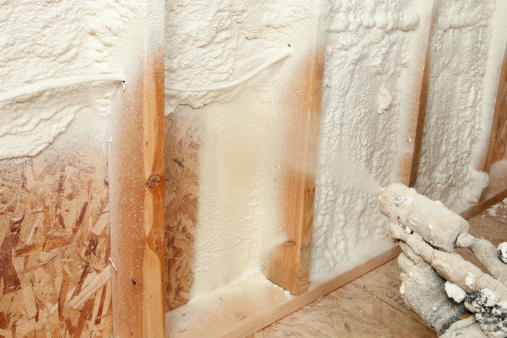Crawl Space Insulation - What Type of Crawl Space Insulation Should You Choose?

Crawl space insulation is a good way to protect your home from the elements, improve the air quality in your house and make your heating and cooling systems work more efficiently. However, it is important to consider a number of factors before you decide on what type of crawl space vapor barrier you want to install.
First, you need to decide if your crawl space is vented or unvented. Vented crawl spaces need to be insulated on the ceiling floor joists, while unvented crawl spaces should be insulated on the walls.
Fiberglass batts are the most common form of crawl space insulation. These are usually installed between floor joists, and they're very inexpensive. But fiberglass has some drawbacks: It can absorb moisture, support mold and mice, and even sag or fall out of place.
Another option for crawl space insulation is rigid foam board. This type of insulation is a much more efficient form of insulating your crawl space, and it's less expensive than fiberglass batts. Learn more about contractors at https://en.wikipedia.org/wiki/Construction.
Other options for insulating your crawl space include cellulose and spray foam. Cellulose, for instance, is a great choice for crawl spaces that aren't vented to the outside, since it provides excellent moisture control.
The cellulose material is also a great option for those who are concerned about the environmental impact of their crawl space insulation materials. This material is often made of up to 90 percent recycled materials, so it's a green alternative.
Finally, you'll need to choose an insulating material with an R-value that is suitable for your climate. This is important, as R-values vary by region and can affect the amount of energy you use.
R-values are also important if you're looking for the best value for your investment. The higher the R-value, the more effective the insulating material will be, and you'll end up saving money on your heating and cooling bills over time.
If your crawl space is not insulated, you'll probably notice cold floors and drafts during winter months. This means your heating system is working harder than it should, and it's wasting valuable energy. Fortunately, insulation will prevent these leaks and help keep your home more comfortable during those cold months.
The EPA estimates that the average U.S. household saves 15% on its heating and cooling costs when it's insulated properly. That's a pretty big payoff in the long run, so you can't go wrong with crawl space insulation!
Before you can start insulating your crawl space, you'll need to clear out any debris or obtrusions that may interfere with the installation process. You'll also need to remove any sharp rocks or other objects that could tear through the vapor barrier.
The next step is to encapsulate the crawl space with a plastic vapor barrier and a layer of insulation. This will provide a tight seal that prevents moisture from entering the crawl space and allows your insulation to be more effective.
